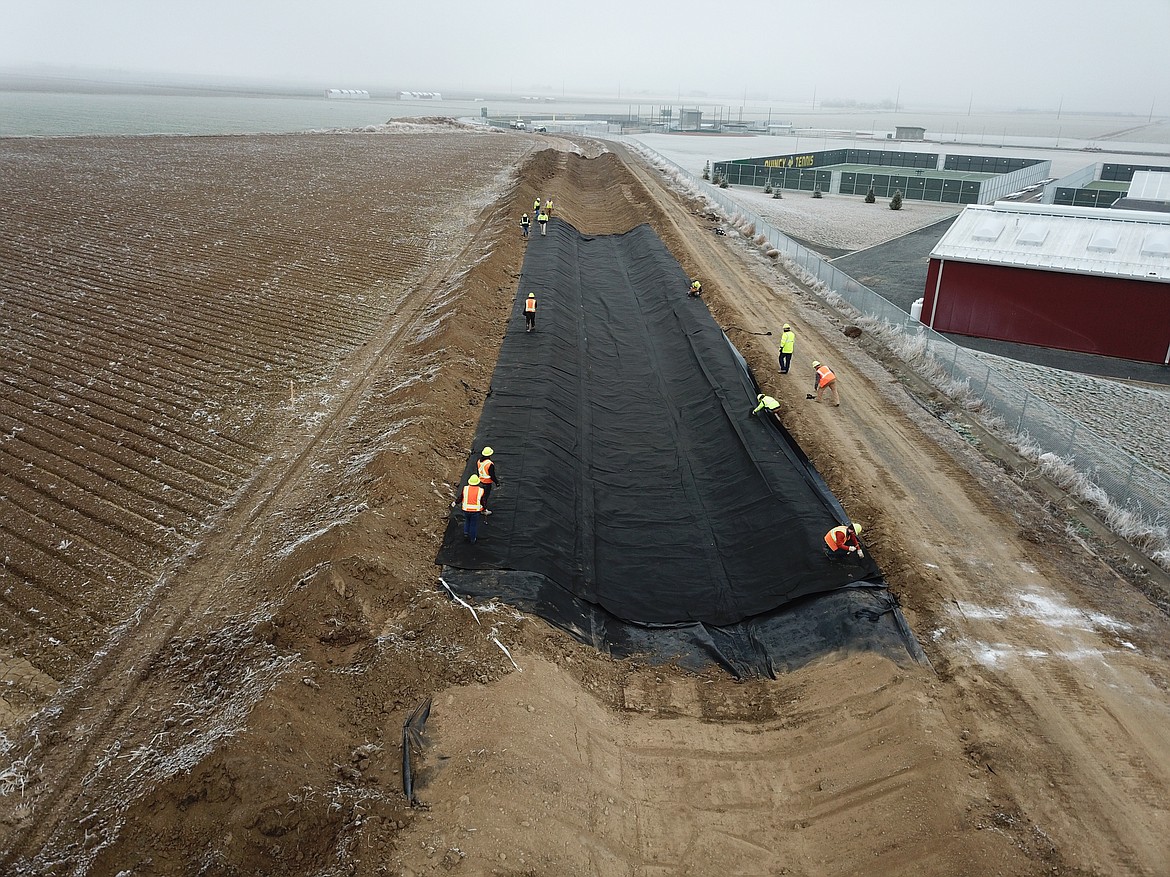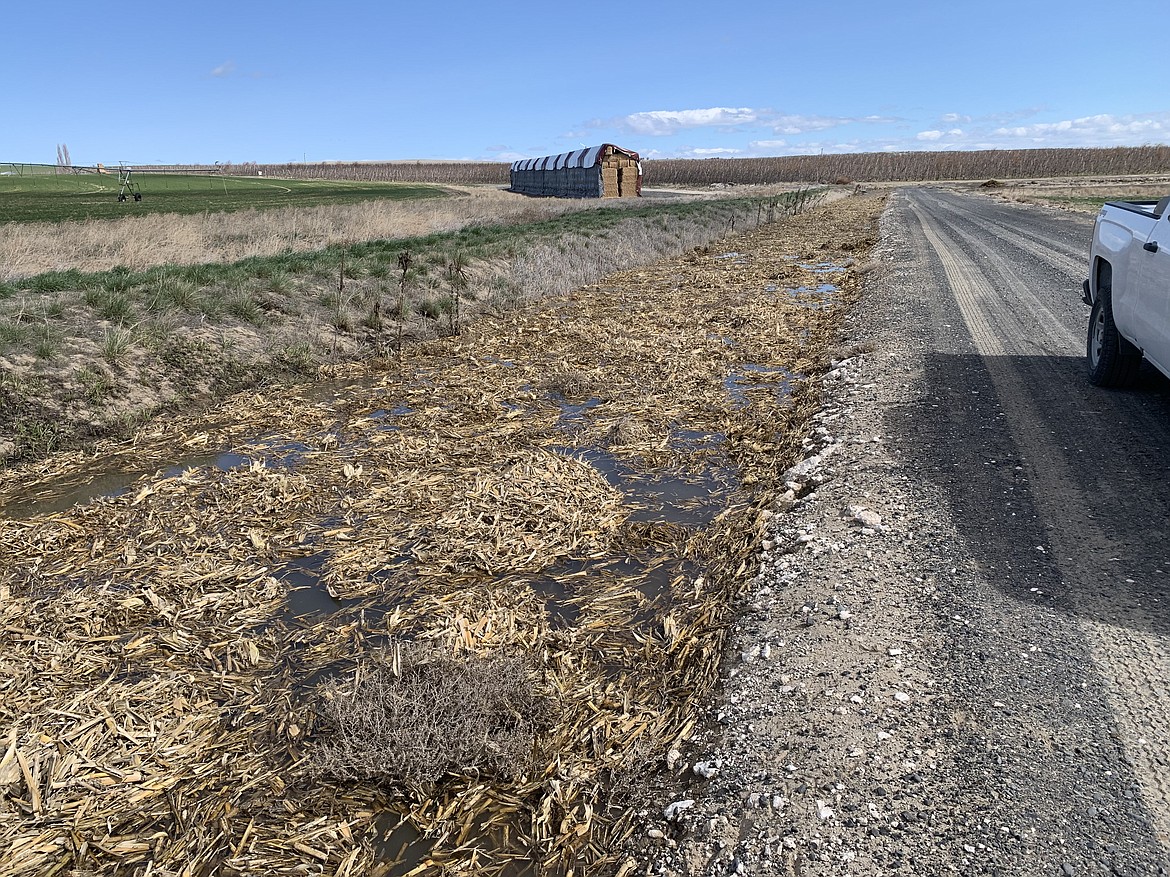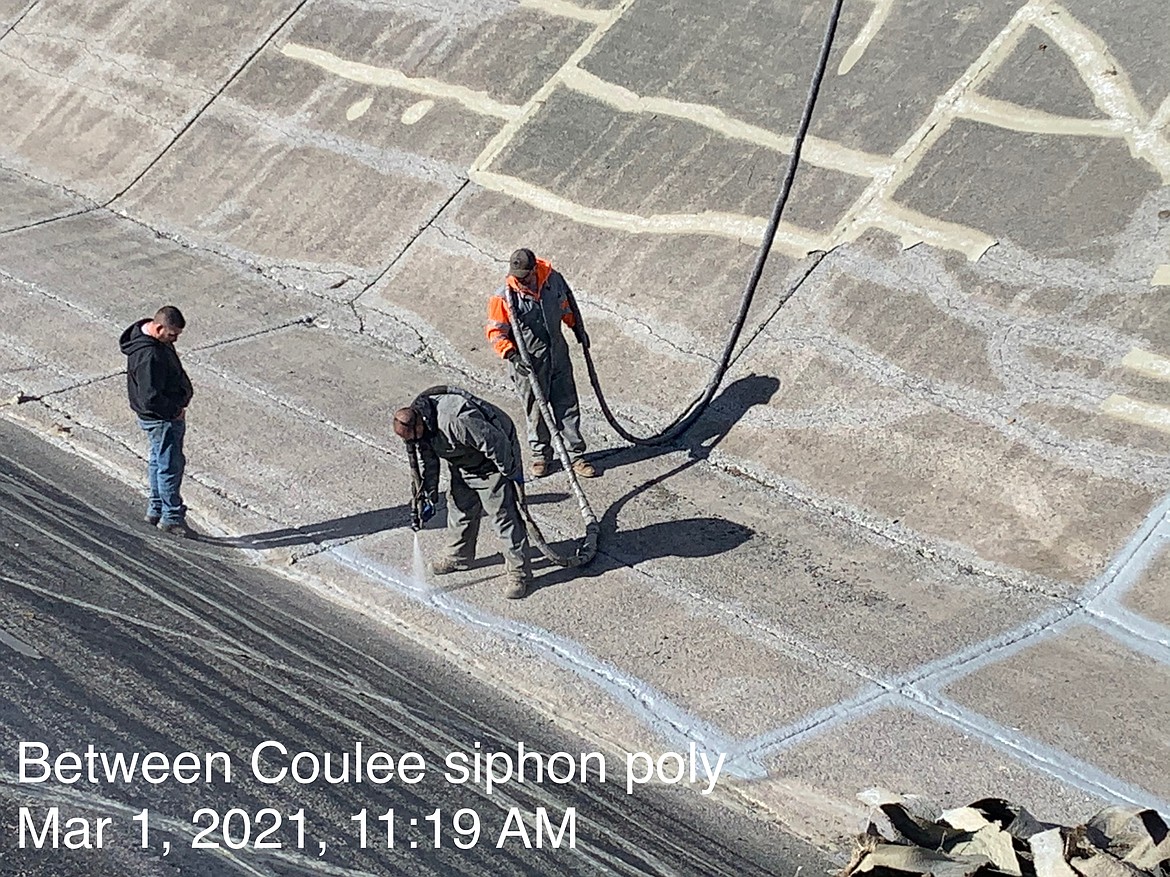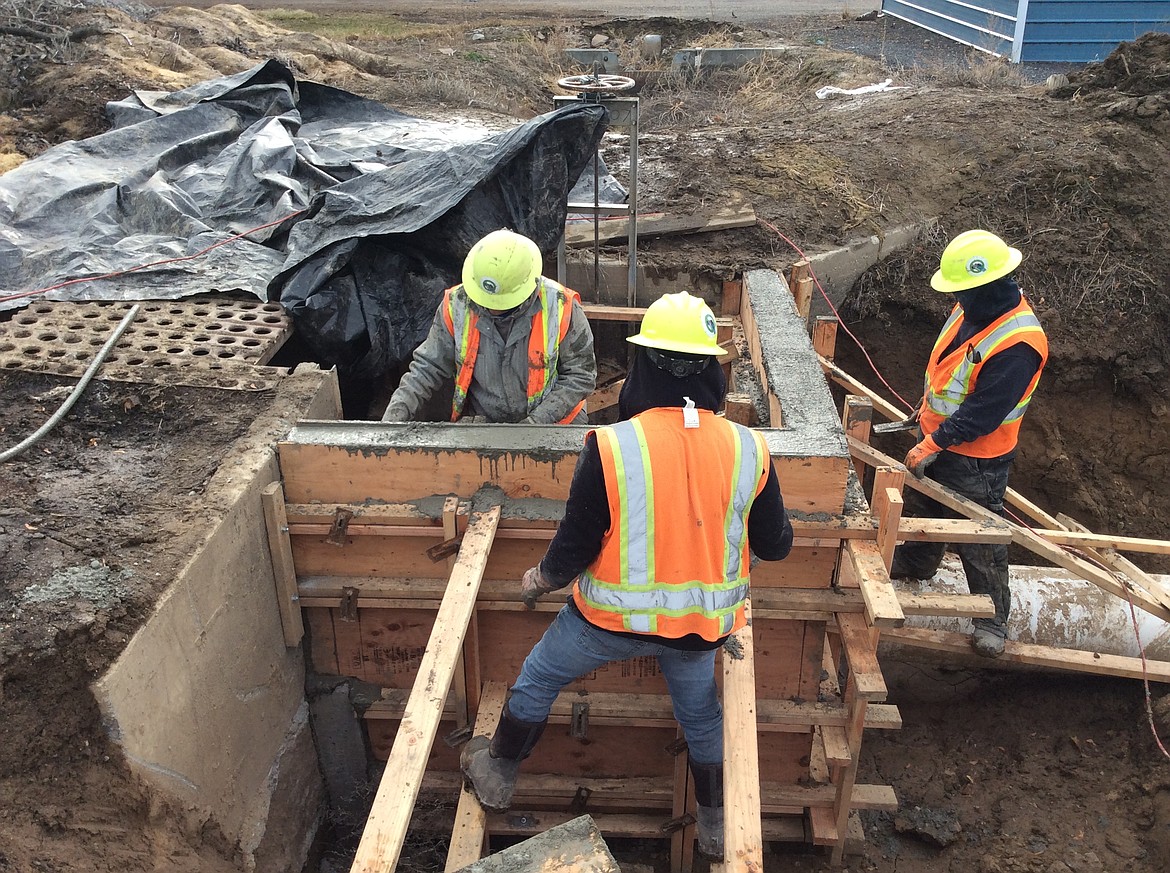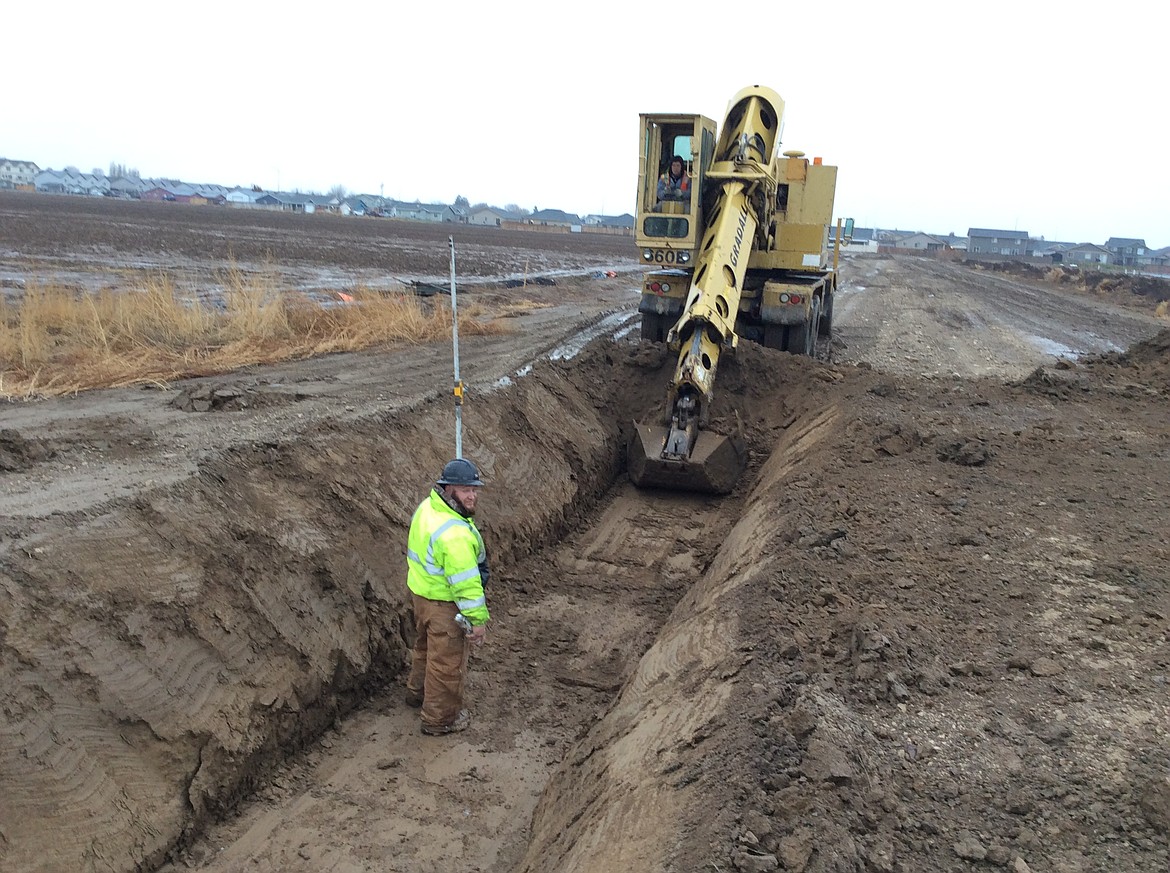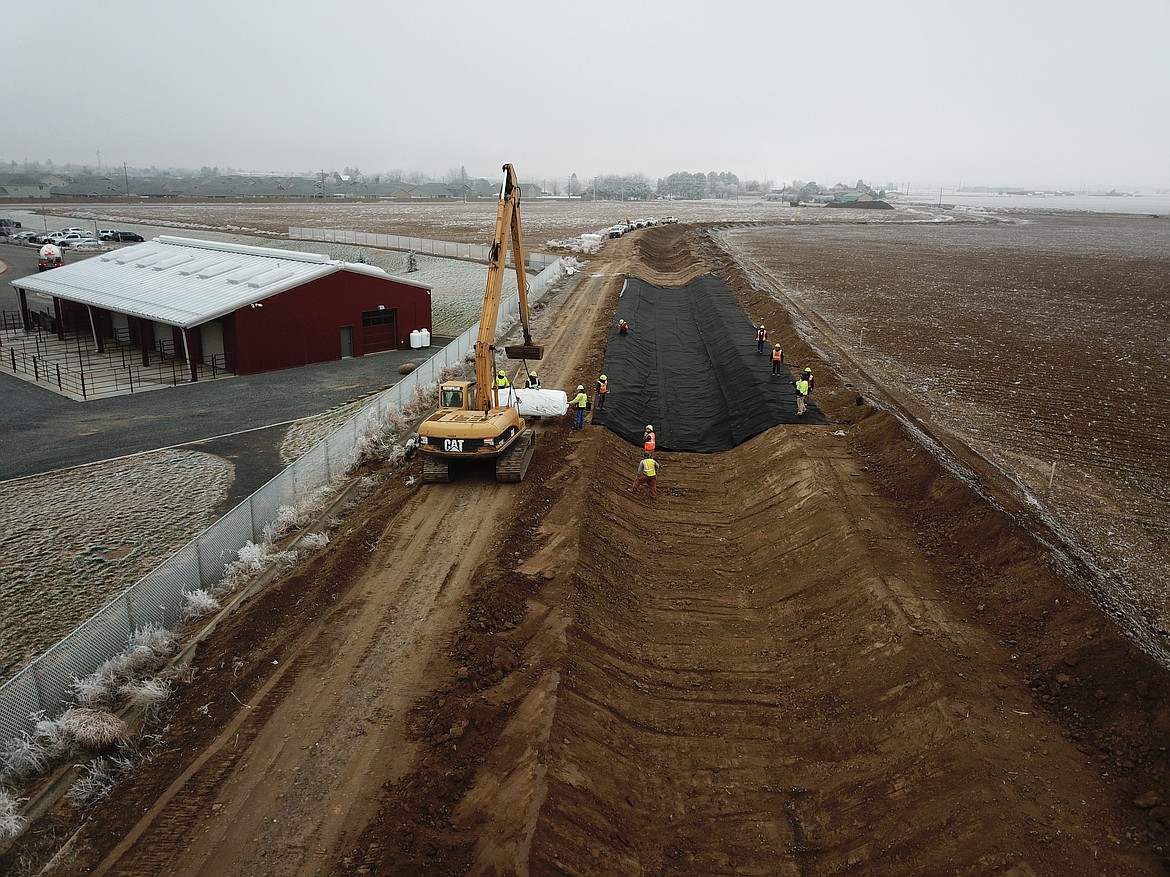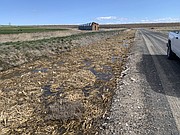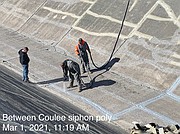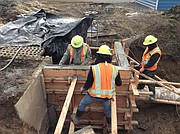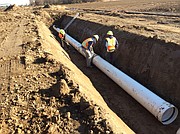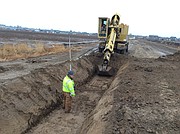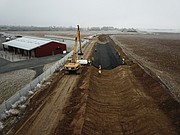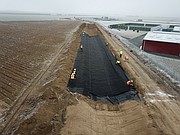Saving water is a serious job for Quincy irrigation district
QUINCY — Three million acre-feet.
That’s how much Columbia River water is pumped out at the Grand Coulee Dam every year and sent to the three irrigation districts served by the Columbia Basin Project.
The Quincy-Columbia Basin Irrigation District (QCBID) takes a little bit more than a third of that to provide water to around 275,000 acres.
It’s a lot of water delivered to a lot of land.
“Unless people see the scale,” said QCBID Secretary-Manager Roger Sonnichsen, “all the way from Soap Lake and Stratford down to Royal Slope. The West Canal is 88 miles long.”
And there are thousands of miles of secondary canals, ditches and pipes all designed to distribute that water. It means, Sonnichsen said, a lot of water is lost every year — something the QCBID is working hard to limit.
“There’s lots of seepage and evaporation across the project,” he said. “It’s estimated at about 334,000 acre-feet in an irrigation season.”
Over the last 15 years, Sonnichsen said, the QCBID has managed to reduce seepage and evaporation in its system by around 32,000 acre-feet by lining canals, patching concrete and replacing earthen ditches with pipes.
“Last year we added 3,700 acre-feet to that,” said Troy Freeman, QCBID assistant manager.
Saving that much water is an expensive proposition, and Sonnichsen said the QCBID sets aside roughly $2 million each year — partly offset by federal and state grants such as the Bureau of Reclamation’s WaterSMART program — for water efficiency improvements.
According to Sonnichsen, the QCBID has an operations and maintenance budget in 2021 of $23.5 million, which does not include the $2 million for upgrades and system improvements.
The WaterSMART program helps local governments, irrigation districts and recognized Indian tribes across the Western United States cover the cost of water and energy saving projects, according to the Bureau of Reclamation’s website. The program focuses “on projects that can be completed within two or three years.”
Like the water-saving measures the QCBID does.
Sonnichsen said the most expensive projects involve installing canal linings, which involve digging up a section of an earthen canal, laying down a plastic membrane, and then covering it, either with dirt or rocks and concrete. The QCBID is currently preparing to replace a 2,000-foot-long section of the West Canal along the Royal Slope and the W61F lateral near Royal City.
The estimated cost for the lining with the concrete cover for the section of he West Canal is $750,000, of which $300,000 is covered by a WaterSMART grant, Sonnichsen said.
The QCBID selects those places where it upgrades to a plastic canal liner based on water loss, and concrete is usually added in places where the breaching of the canal, or seepage, could cause significant damage.
“If a canal would breach there, then there would be an orchard or a house or something like that where the cost of repair would be significant,” Sonnichsen said. “The membrane itself provides the water savings; the concrete adds that stability in case there’s issues.”
One recent project involved lining the West Canal with a plastic membrane and concrete just north of Quincy’s new high school, where a breach in the canal flooded a parking lot a year ago.
Less expensive than a plastic lining with (or without) concrete reinforcement is the replacement of small irrigation ditches with plastic pipes. This prevents evaporation and also limits the amount of ongoing maintenance — particularly weed clearing — QCBID crews have to do across the district.
“Piping in particular saves on maintenance,” Sonnichsen said. “Once it’s underground, you don’t have to worry about weed growth in the ditch.”
And the QCBID is constantly having to clean out weeds, pile them up and burn them so they are no longer a problem, Freeman said.
“We got the water in the ditch this last Sunday,” Freeman said in early April. “The wind blew really hard and filled ditches up with weeds and so we’ve been struggling getting all those weeds back out.”
In places where the canals are already lined with concrete, Sonnichsen said the QCBID also patches existing concrete to limit leakage and continue to hold the concrete in place.
“That’s another effort that we’re heavily invested in right now,” he said. “We are thinking about other ways of improving our system, including some automation, but we’re getting into that slowly.”
“Our main focus will continue to be on those three things — lining, piping and crack sealing,” Sonnichsen added.
In addition to all of this, Sonnichsen said the QCBID operates nine pumping plants that must be maintained, as well as the power lines and transformers to keep everything running. It’s enough to keep the district’s 117 employees busy year-round.
“It is a lot of work,” he said.
Charles H. Featherstone can be reached at [email protected].


